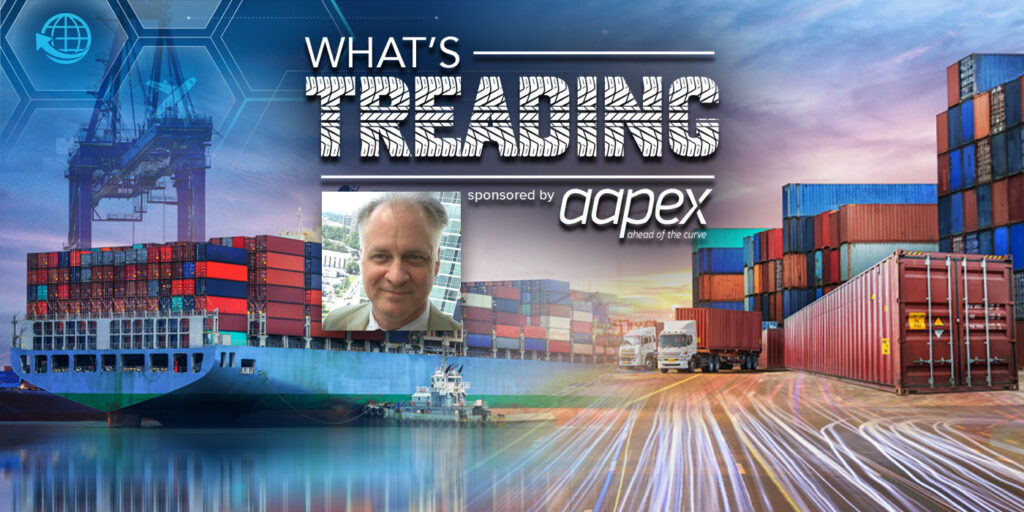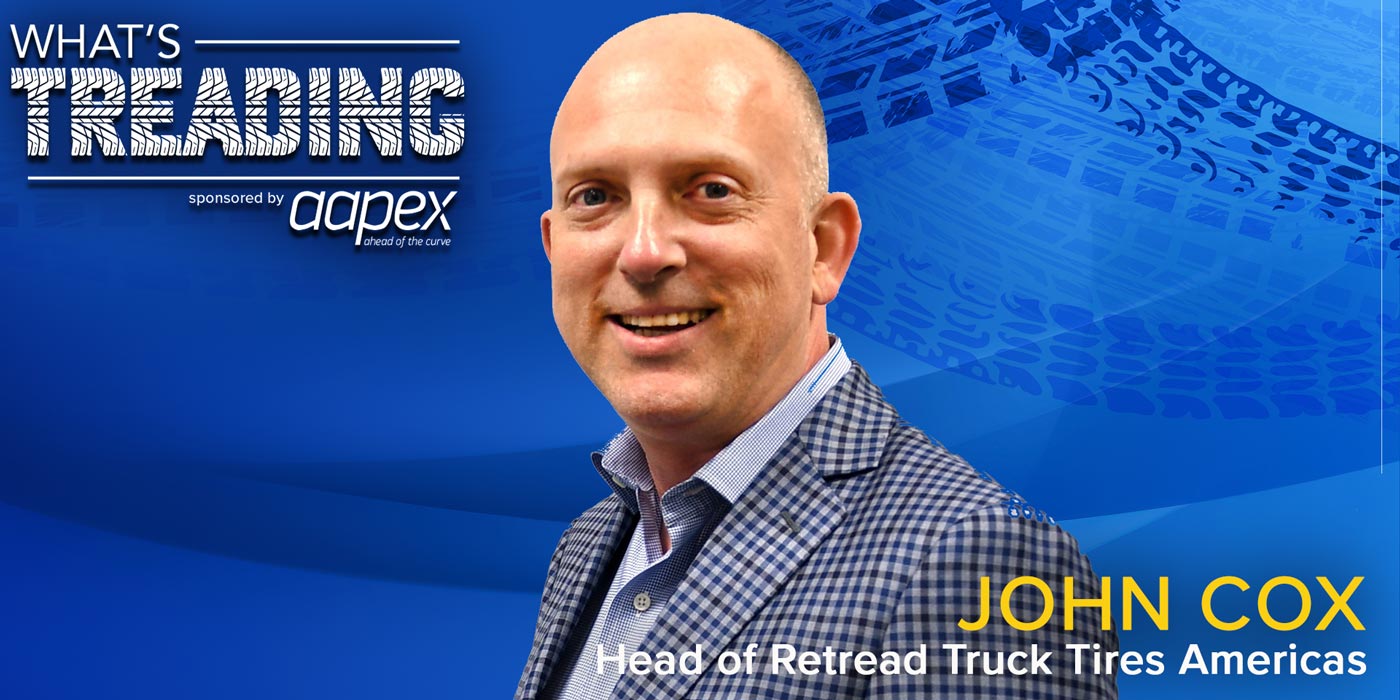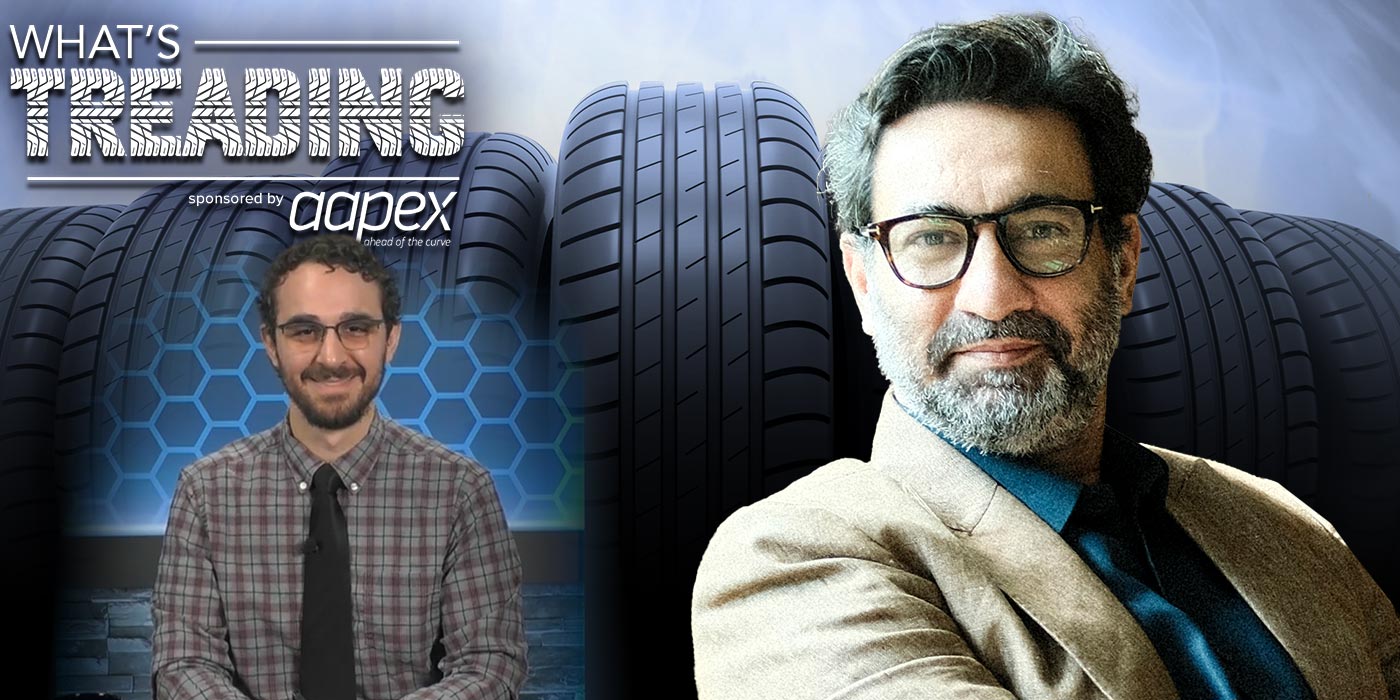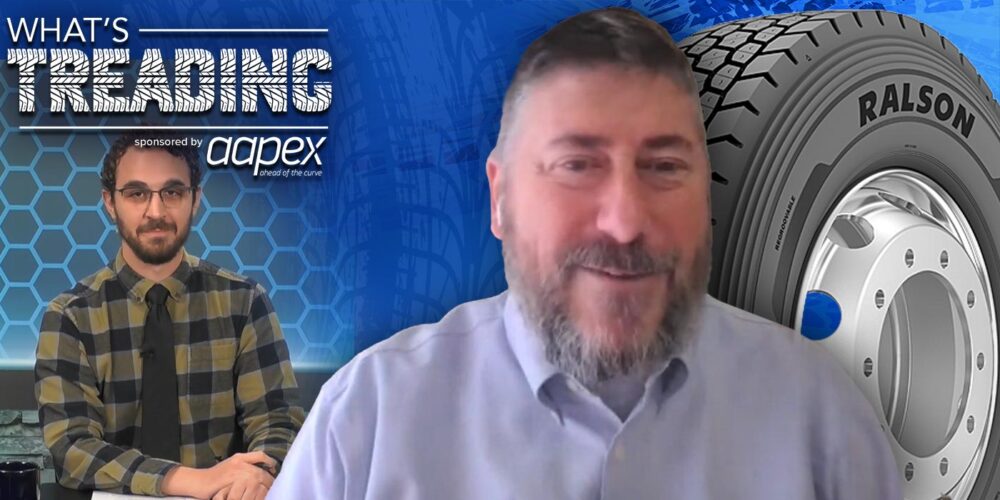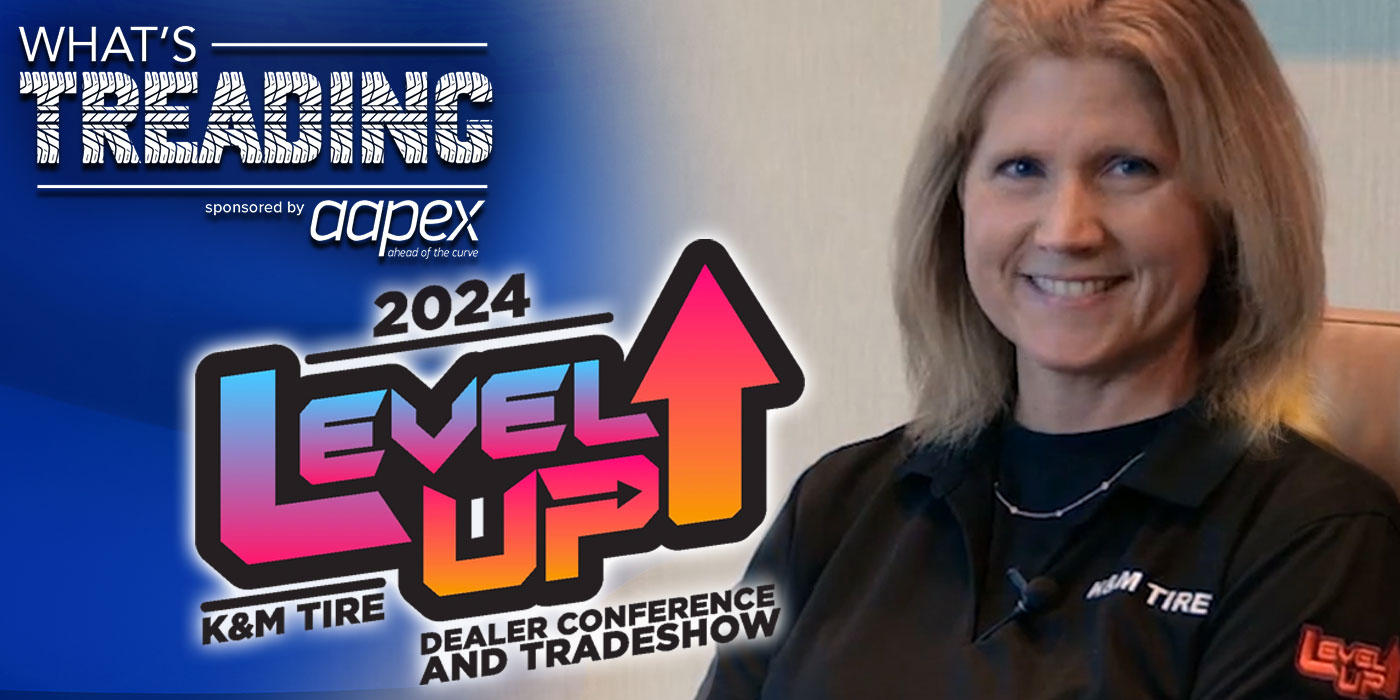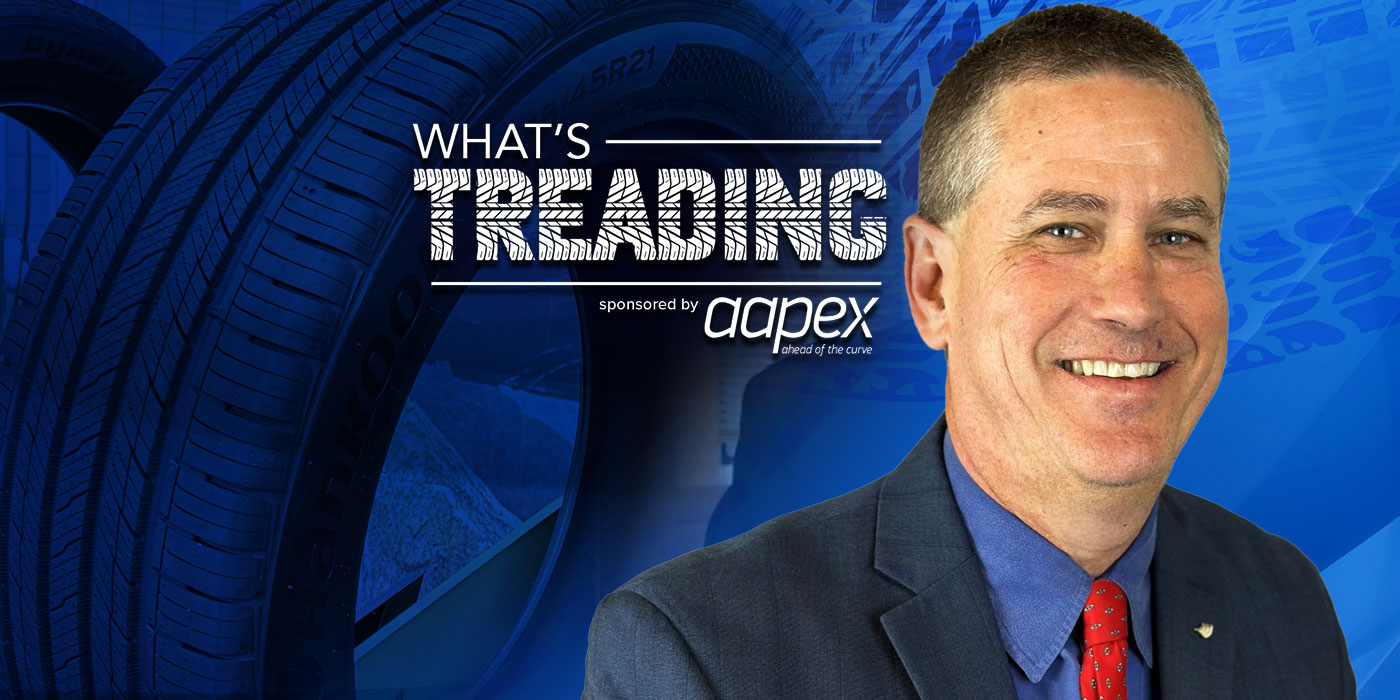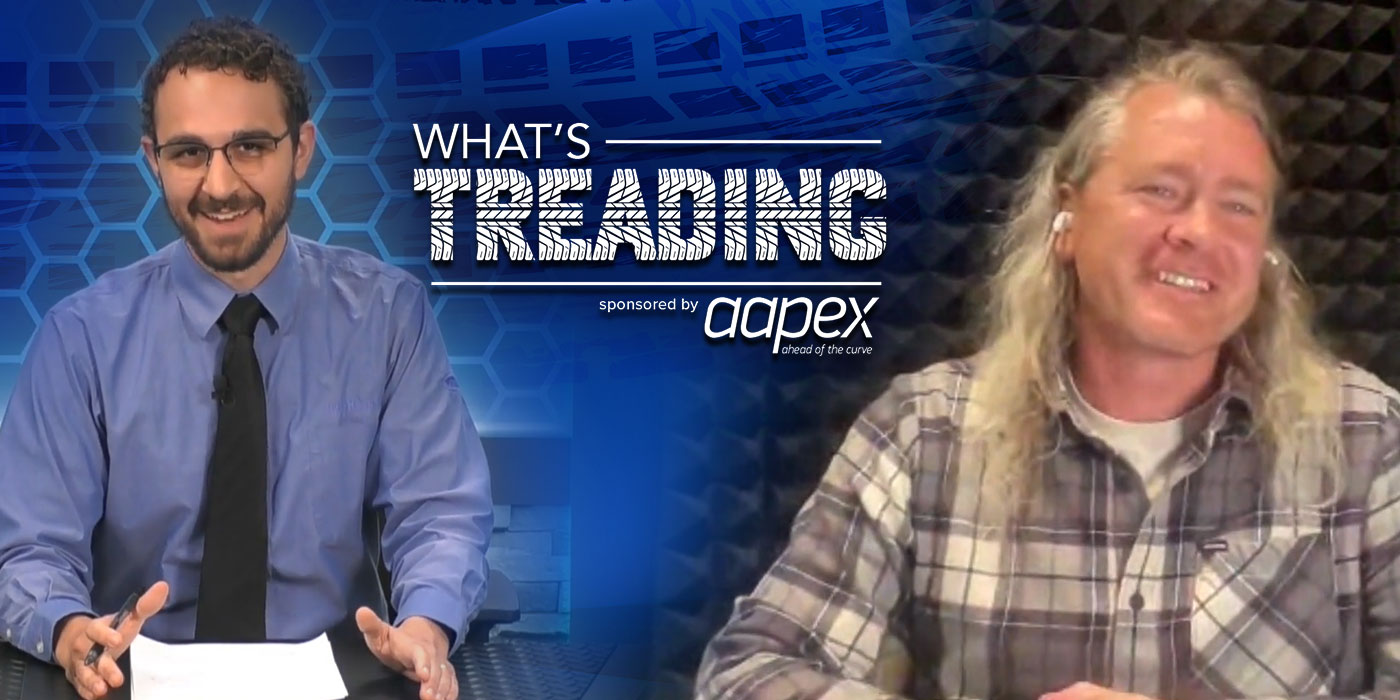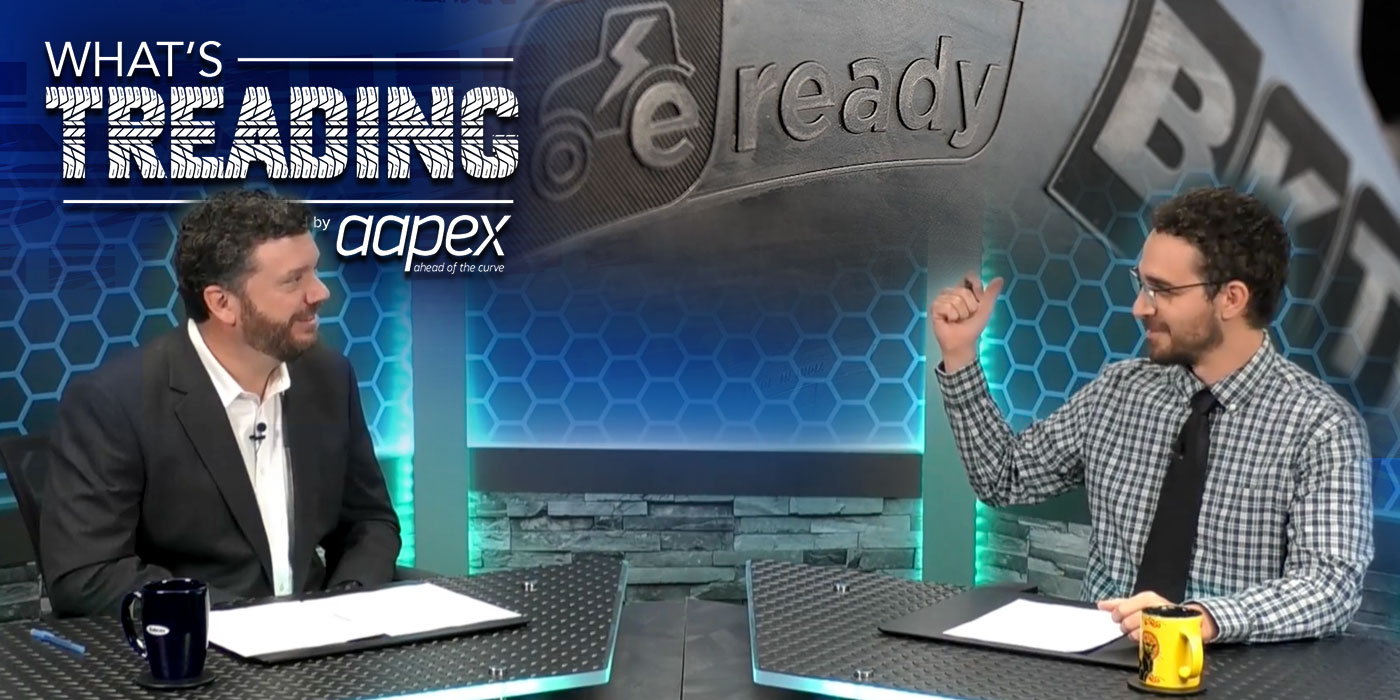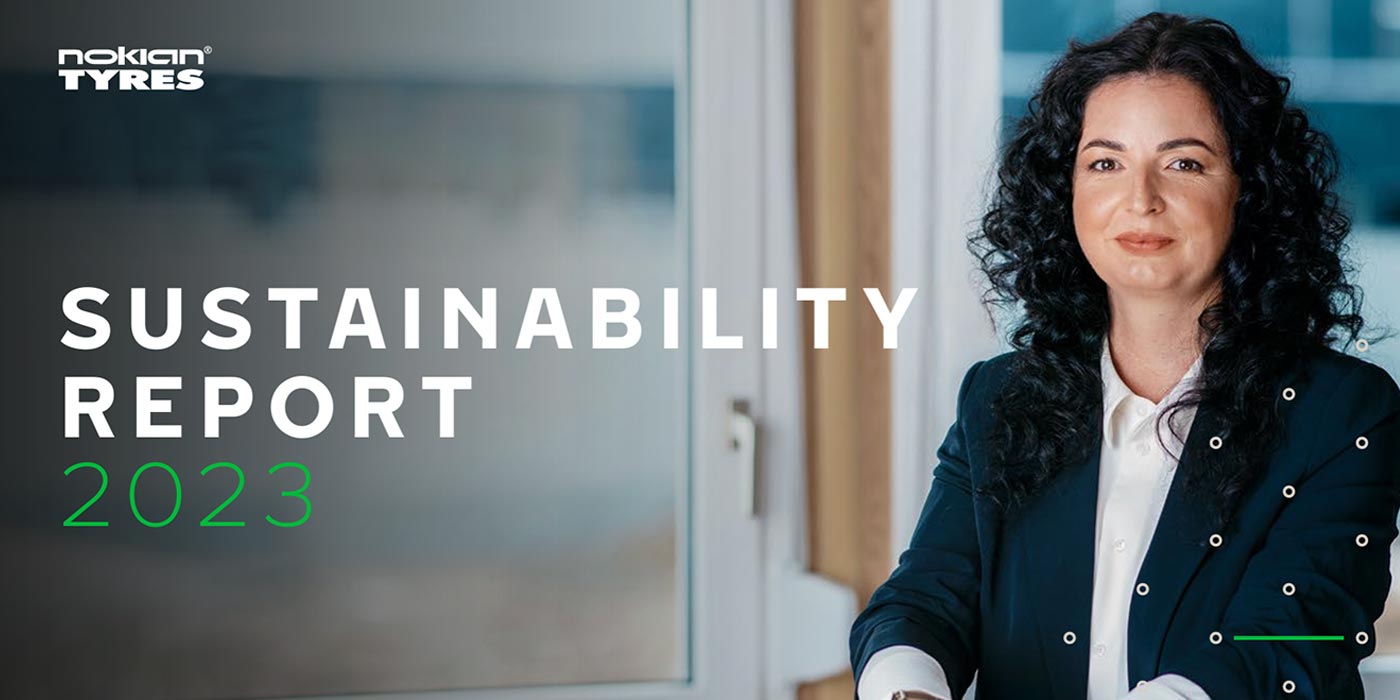For the last several years, the one word that constantly comes up in conversations about the tire business is supply–No. 1 getting the tires, and No. 2, getting the ones you need. Inflation has caused logistics and transportation costs to rise, and we’re still seeing port congestion and other ripple effects from COVID shutdowns and bottlenecks. Yet, there are a few bright spots that linger in the distance, despite the disruption we’ve seen over the past few years.
To dive into the topic of supply chain disruption, we spoke with Art Mayer, a contract writer and consultant that’s president of Zephyr Research Partners which covers a wide range of topics in the tire industry. Art has years of experience in the industry working in a variety of roles for Dealer Tire and serving as a researcher for Smithers. He has previously been a speaker at Smithers’ Traction conferences, covering the emerging areas of sensors and intelligent tires. Recently, he wrote a Smithers report titled, “The Impact of Supply Chain Disruption on the Tire Industry.”
In this interview, Art delves into:
- The myriad of factors affecting the tire supply chain today. (1:00)
- A silver lining that may come in the second part despite this being the “worst supply chain disruption in 50 years.” (5:46)
- How manufacturers are changing supply strategies to adapt to the climate (8:09)
- How consolidation in the tire distribution and manufacturing channel impacts supply chain (9:26)
- The context of tire supply in the greater supply chain challenges for the automotive industry, including the semiconductor shortage (11:38)
- How EV sales and other future mobility trends are affecting supply and could speed up the adoption of tire management solutions and fleet ownership (15:00)
- How efforts to sustainably source raw materials and manufacture tires have increased and how supply chain challenges played a role (17:14)
- How the Russian war in Ukraine impacts the tire supply chain (19:10)
Listen to the audio podcast below or subscribe on Apple Podcasts, Spotify and Google Podcasts. You can also watch the video version of this podcast here or on YouTube. Or, read the full interview below.
Madeleine Winer (TR): You published this report on supply chain disruption in the tire industry last year with Smithers. A lot of disruption in the tire supply chain started with shutdowns due to COVID. From your research, how would you describe the tire supply chain today?
Art Mayer: Well, unfortunately, it’s anything but normal. The report I wrote last year was a snapshot at the time, which already seemed like a pretty messy situation… Things did start with COVID shutdowns, which basically helped get supply and demand out of whack. You’ve got a tire production shutdown, you’ve got an automotive production shutdown… On the other hand, you had a demand stimulus injected into the economy, at least in the U.S., which kept demand relatively high relative to what the supply was, so I think that was probably the genesis of all of this.
However, it has compounded. There’ve been ripple effects, secondary effects, and now we have other issues coming. Most recently, the Russia/Ukraine situation. There’s really not been much of an opportunity to get things back in balance. Just a day or two ago, I was looking at the latest report from Drewry, which tracks maritime shipping, and they’re saying it’s still the worst situation they’ve seen in 50 years in terms of the backlogs and disruptions to normal maritime trade flows. It might not even begin to get back to normal until early 2023, and that’s probably a rosy scenario since it assumes that no further things will go wrong.
And, COVID shutdowns are actually still going on if you look at China… so that’s going to keep things riled, and with China being, of course, very important to the global automotive and tire sectors, it’s going to continue to play out for some time. We still have port congestion in California as well.
Just in a greater context, though, the tire industry’s main customer–the automotive industry–had among the most globalized and complex supply chains out there. We’re maybe not seeing quite the problems in tire manufacturing that we are in automotive like the delays to OE demand, especially given the roles that the OEMs are playing in tire development and electrification, for example. With the semiconductor shortages and delays, I think it’s over a 26-week wait time on ordering chips. That’s going to continue to result in sporadic shutdowns from time to time that are going to make planning more difficult and increase your wait time on vehicles.
The electric vehicles coming out have more chip intensive in terms of the number of chips going into the vehicles compared to conventional ones. In a sense, we’re going to be more vulnerable, more exposed to these supply chain issues. I don’t want to get too far afield here. There are probably a million things I could mention, but the supply chain probably, in some respects, it seems to improve, but I think these latest setbacks might be keeping things pretty
I would add, though, that maybe there’s a silver lining. The potential slowing of demand for new cars– due to the higher oil prices and other input costs– may slow down tire demand to a point where there’s less urgency to catch up with the production. There’s the possibility to bring supply and demand back into balance a little bit, although it’s at an overall lower level of activity and profitability, so it’s not entirely positive, but you have to look for some positives where you can.
MW: There’s a lot to unpack there. So, you’re saying that this is the worst supply chain disruption we’ve had in 50 years?
AM: Yeah, that’s from the Drewry perspective from the standpoint of maritime container shipping.
That’s pretty significant whether you’re shipping finished tires or raw materials. One thing I’m seeing here and we’ll see increasingly is the reshoring of production or the moving of automotive and tire production closer to the point of consumption. You’re better able to tailor the mix to that particular market, but it’s also cheaper to ship the raw materials and then do the production and maybe have localized inventories to help be a buffer from this otherwise very far-flung globalized supply chain that’s developed over the last several decades.
On the sourcing side, you want to try to minimize your exposure to troubled regions where there’s higher geopolitical risk, and unfortunately Russia and Ukraine, and the Russia-Europe trade relationship, that’s a pretty big thing to have destabilized. In the meantime, we have to keep an eye on China and the South China Sea and Taiwan because a lot of the high-value-added sophisticated ships are coming out of Taiwan, for example. I’ve read a lot about overseas manufacturers building more warehouses in the U.S., for example, so they’ll be better able to supply for a longer period should there be problems with replenishing.
There is some consolidation of distribution as well…so additional efficiencies, additional capacities, and redundancies in networks will become more attractive.
MW: You’re saying all of this trickles down to distributors and then eventually dealers. Maybe as those efficiencies are realized, dealers could be getting tires quicker and sooner. Is that a fair assumption?
AM: I would say that for retailers and distributors, [challenges from COVID] have been going on for two years now, so they’ve already been adapting. They’ve been trying to bolster inventories of key SKUs. They’ve been trying to do a better job of demand planning, in some cases using artificial intelligence in some parts of the operation to better understand what to pre-order and what to have and understanding how to sell substitutes if necessary. They’re more careful with the customers and more intensely in order to anticipate what their needs are going to be.
In the long run I think you’re going to see more improved tire management programs and demand forecasting, where you’re actually better able to monitor tire wear and replacement likelihood. Again, these aren’t necessarily short-term solutions, but there’s so much in the industry that has to adapt up and down the chain that means it’s probably not going to be very normal for a while.
MW: Another thing you said that I was intrigued by is the semiconductor shortage, and it definitely relates to the tire industry because of manufacturers’ OE business and more vehicles on the road means more business for dealers. You were saying that it’s taking 26 weeks to get some of these semiconductors to the factories?
AM: That’s the average lead time for placing an order for semiconductors. But it’s fluctuating. Part of the problem is some of the raw materials are even further upstream. Neon, for example. Russia is a big exporter of neon, so if it’s not available or there are sanctions, there have to be ways to find alternative sources. It’s just going to add more delay, possibly more cost. If at the same time you’ve got more people buying electric vehicles, then you need more and more chips. The supply/demand situation will become more acute.
That affects OE tire sales obviously, but that’s where a lot of the innovation is. It does make a replacement market in the short-term more important, but then there are other factors that are reducing replacement demand, such as the cost of gas and reducing miles driven or commuting. I mean, we have some rebound in commuting from the most serious COVID restrictions, but now having gas in the U.S. may be averaging $4.71 with Washington State preparing their signage on gas stations to be able to accept four figures, so $10 gas. I don’t think that’s going to be too easy to take in stride. I think that between that and the rising tire prices that we’re seeing, it goes beyond the supply chain. It goes to whether we might even have kind of a recessionary environment like we did after the 2008 financial crisis.
MW: What are some current and potential disruptive factors to the tire industry today? We’ve talked about some, but are there others that maybe we haven’t discussed?
AM: There are some that are kind of underlying and ongoing that were in their own right complex enough without this overlay of different supply chain problems. Some of these are affecting the supply chain and some not so much. For example, the increase in electric car sales that we’re seeing, which, in turn, fulfills a lot of government mandates to eventually phase out internal combustion engine cars. That’s resulting in a lot of extra tires for electric vehicles. You’ve still got the conventional tires, too.
You’ve also got new tires coming on electric vehicles, so it’s greatly increasing SKU complexity at the manufacturing level but also at the ordering and inventory level. I would say the ongoing or accelerating shift to electric cars is, by itself, a pretty significant disruptive factor. It’s just a little more in slow motion. Now, there are going to be things that slow that down a little bit. Even though it seems to be a regulatory and a corporate imperative to go electric, there are still going to be limitations in infrastructure. It’s not obvious that the cost of electric power is going to remain reasonable, because to some extent, it’s fossil fuel-powered… In the meantime, electrification is indeed driving complexity in the reengineering of tires and the complexity of the inventories.
Now there’s a positive trend. I think from the standpoint of tire management utilization and replenishment, there will be a tendency for vehicle ownership to increasingly shift from private ownership into fleets.
You can see precursors to that in the growth of the ride and car-sharing services, so I think especially as autonomous vehicles are pursued, you’re going to see more and more of this migration to a fleet model. Autonomous vehicles are going to be a lot more expensive, may be beyond the ability or practicality of individuals to own. So this way, they’ll be owned by companies. And, these companies are going to be on top of tire management. They’re probably going to have more sensor-equipped tires that are not just reporting on pressure and temperature, but also tread depth. They can get real-time information on the tire status of the fleet, and when they’re going to need more tires or when there’s a tire incident, blowout or something, we’ll see better tire management and replenishment and consolidation of buyers, and I think that’s going to help mitigate some of the supply chain issues downstream in manufacturing.
In retail and the servicing of tires, that’s even going to result in mobile installation being a much more common way to go. It seems just about every little local company or a big one like Tire Rack, for example, has some kind of program where they’re making that increasingly available.
MW: How are these supply chain factors influencing the push to more sustainable sourcing?
AM: I think these issues have actually, if anything, accelerated the trends that we already saw happening in terms of sourcing. There was already a desire to get away from oil-based products such as carbon black and synthetic rubbers. The particular issues around the oil price and where a lot of those products come from, like Russia for example, make it more imperative than it already was to find non-oil based alternatives, to find substitutes such as recycled carbon black, reclaimed carbon black, or novel versions of it that don’t use oil.
Of course, the push toward using HDS silica is already very important to achieve lower rolling resistance, particularly with electric vehicle tires. It’s going to push HDS, it’s going to push recovered carbon black and the biosourcing of sustainable rubber alternatives as well as more use of natural rubber. Although, then you’ve got the whole sustainability issue behind responsible harvesting. Natural rubber will be important, but I think the really big changes are going to come with oil product substitution.
MW: Art, you mention in the report that the tire industry is highly sensitive to regional and global challenges that can limit or delay sourcing, production and tire distribution. You’ve talked about that in terms of China and the Russia/Ukraine situation, so can you describe how you’re seeing the current Russian war on Ukraine impacting the tire supply chain?
AM: Well, for one thing, the loss of the Ukraine and Russia markets in production to the global tire ecosystem is a bit of a shock. They’re maybe not huge markets, but a lot of the ingredients [for tires] are coming from there. In the meantime, you’ve got the effect of sanctions. There’s an impact on the tire production itself. A lot of companies, such as Continental, Michelin, Bridgestone, Yokohama, and especially Nokian, are affected by the sanctions and their need to back away from producing in Russia at this time. The price increases are having effects everywhere. Even the production of fertilizer… Russia’s a big producer of that. That’s going to have major effects on agriculture and agricultural tires and possibly on non-tire-related areas like food.
It’s already very broadly disruptive, and even things like wire harnesses for automotive production are being held up. The thing that I find most concerning is that even if you just look at the Russia/Ukraine situation, it’s easy to see how that’s becoming a proxy war between the collective west and Russia, which at the moment I don’t see anyone looking for off-ramps, so I’m a little concerned about escalation and then maybe opportunistic things happening over in Taiwan, for example. We could be just doing a dress rehearsal for some somewhat more dire scenarios, but I hope not.
MW: Yes, it’s definitely a major concern. Art, I’m wondering, there’s a lot affecting the tire supply chain today, but I want to end this podcast on a positive note for the industry. Whether it’s on the dealer side, the distributor side, the manufacturer side, what are some positive things you’re seeing that you think will greatly boost the industry down the line?
AM: Well, there’s a lot of investment going into tire manufacturing, quite aside from any kind of material substitution, and basically I think the tire industry’s going to be able to, with this technology investment, meet the ever-increasing objectives for reduced rolling resistance. They’re going to start to be able to make progress on capturing tire wear particles, which are an emissions issue. Improvements in mixing and manufacturing are capable of addressing that with the proper investment.
The continued advancement in the tires is going to make a big environmental contribution in terms of fuel consumption or battery use. I’m very optimistic about that. The fact that so many of these investments and changes are not being derailed but are being accelerated by the uncertainty, I think is a very positive thing. I think we’re going to be in good shape in terms of the contribution of tires to a more sustainable automotive ecosystem.

